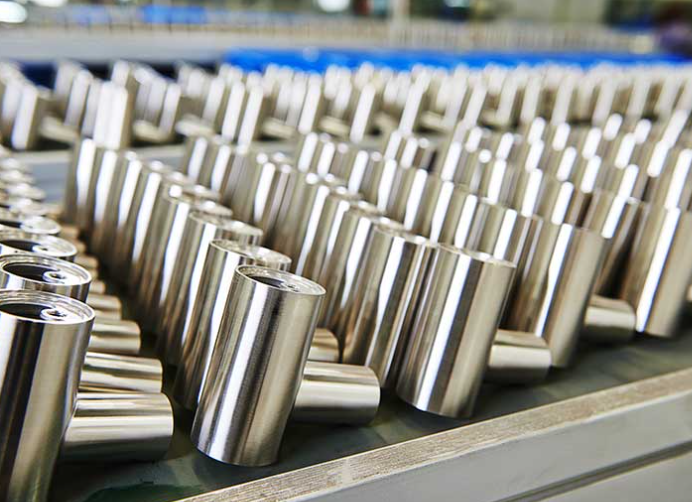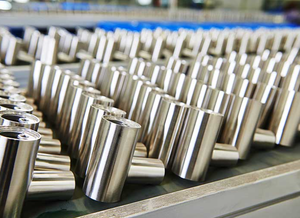
Inspection methods for metal materials Inspection and certification services for goods inspection and factory audits
As the basic raw material for industrial production, the quality of metal materials directly affects the performance and safety of the final products. To ensure that metal materials comply with national and industry standards, it is crucial to establish a professional inspection process and quality certification system. This article will systematically introduce the inspection standards, testing methods, and certification requirements for metal materials, providing a complete quality control guide for enterprises.
I. Packaging Inspection Certification Standards
Based on the type, shape, size and anti-corrosion requirements of the metal materials, packaging inspection certification is divided into four levels:
Bulk material certification
Applicable products: ingots, blocks, large steel sections, thick steel plates, railway tracks, pig iron, etc.
Certification requirements: Unpackaged, suitable for products that are corrosion-resistant and have a low value.
2. Bundled Packaging Certification
Applicable Products: Small and medium-sized steel, pipe steel, wire rods, thin plates, etc.
Certification requirements: Check the tightness of the tie up
and the completeness of the anti-corrosion measures.
3. Box/Barrel Packaging Certification
Applicable Products: Galvanized iron, silicon steel sheets, magnesium ingots, etc. (products with high corrosion resistance requirements)
Certification requirements: Packaging integrity, sealing, and moisture-proof measures
4. Shaft-mounted material certification
Applicable products: Wire, steel wire rope, steel strand, etc.
Certification requirements: The shaft is in good condition, the winding is neat, and the protection is adequate.
II. Marking Inspection and Certification System
1. Colored Marking Certification
Location: End face and end of the metal material
Usage: To distinguish materials and specifications, mainly used for steel, pig iron, and colored raw materials.
2. Marking Certification
Method: Stamp or Painting
Brand name, specification, standard number, etc.
Applicable to: Medium-thick plates, profiles, and colored materials
3.Listing Mark Certification
Location: On the exterior of bundled, boxed, or bundled materials
Brand name, size, weight, standard number, supplier information
Certification requirements: The logo must be clearly visible and well-protected during transportation and storage.
III. Inspection and Certification Standards for Specifications and Dimensions
1. Basic Concept Certification
Nominal Dimension: Ideal Design Dimension
Dimension deviation: The difference between the actual size and the nominal size
Accuracy level: Ordinary level, Higher level, Advanced level
2. Delivery Length Certification
Typical length: Unfixed length within the specified range
Short/ Narrow Length: Less than the lower limit of the usual length but not less than the minimum allowable length.
Fixed length: Deliver goods according to the specified length in the contract (plus deviation)
Length in multiples: The length specified in the contract multiplied by an integer (including the notch and positive deviation)
Inspection requirements: Select appropriate measuring tools and accurately measure the specified areas.
IV. Quantity Inspection Certification Methods
1. Actual Weight Measurement Certification
Full-scale weighing inspection
The inspection rate of products with tight packaging is ≥ 5%
Full inspection when there is a significant difference in weight
2. Theoretical Conversion Measurement Certification
Based on: Nominal dimensions and material density
Applicable to: Standard-sized plates and other specified materials
Please provide the accurate and fluent English translation of the following text, following the natural and smooth expression habits of English. Directly give the final translation without adding other words.
V. Key Points for Surface Quality Inspection Certification
Main Defect Types and Certification Standards
Ellipticity: The difference between the maximum and minimum diameters of the same section
Bendiness: Degree of unevenness in the length or width direction
Twist: Spiral deformation along the longitudinal axis
Sickle bend: The degree of curvature on the narrow side
Sagging degree: Wave deformation in both the length and width directions simultaneously
Surface cracks: Surface crack defects
Ear tab: A protrusion extending in the direction of rolling
Fractures: Straight or curved grooves
Scabs: Thin sheets in the shape of tongues, nails, or fish scales
Bonding: Interlayer adhesion resulting from rolling and annealing processes
Iron oxide scale: Surface metal oxides
Folding: The surface layer formed by hot rolling
Blemish: A rough and uneven surface on the surface.
Subcutaneous bubbles: Surface protruding or ruptured bubbles
Certification requirements: Strictly determine the defect limits in accordance with the standards to ensure the performance of the product.
VI. Internal Quality Inspection and Certification System
Quality Assurance Condition Grading Certification
Basic Assurance Conditions: Minimum Quality Requirements (Chemical Composition, Basic Mechanical Properties)
Additional guarantee condition: Conduct special inspections as required by the contract.
Agreement guarantee conditions: Both parties negotiate to ensure the project
Reference conditions: Conduct inspection but do not conduct assessment.
Internal quality inspection items
Mechanical properties, physical properties, chemical properties
Process performance, chemical composition, internal structure
VII. Chemical Composition Inspection and Certification Methods
1. Chemical Analysis Certification
Qualitative Analysis: Identification of Element Types
Quantitative analysis: Accurately determining the content of elements
Weight analysis method: Separation followed by weighing to determine the content
Titration analysis method: Volume measurement determines the content
2. Spectral analysis certification
Rapid and accurate multi-element analysis
Suitable for large-scale inspection and certification
3. Spark Identification Method Certification
The equipment is simple and the identification is fast.
Initial identification of steel composition
VIII. Inspection and Certification Process Standards
1. Sampling Inspection Plan
Implement statistical sampling in accordance with the GB/T standards
Key projects will undergo stricter inspections.
Establish a quality traceability system
2. Equipment requirements for inspection
Use calibrated inspection tools
Regularly calibrate and maintain measurement equipment
3. Defect Evaluation Criteria
Serious Defect: Zero Tolerance for Defects Affecting Safety of Use
Main defect: Significant reduction in operational performance through strict control.
Minor defect: Minor issues are accepted according to the standards.
IX. Key Control Matters for Factory Inspection Certification
To ensure that the quality of metal materials consistently meets the certification requirements, during the factory inspection process, the following matters need to be given special attention:
Production process control: key procedures such as melting, rolling, and heat treatment
Comprehensive testing system: Establish a full-process quality monitoring system
Equipment management certification: Regular calibration of production and testing equipment
Personnel qualification certification: Inspection personnel undergo professional training and obtain certificates before taking up their positions.
Document record management: A complete quality traceability document system
Inspection and Certification Summary
The inspection and verification of metal materials is a highly technical and systematic project that requires comprehensive examination and certification from packaging, marking, specifications, quantity to surface quality and internal structure. By establishing a professional inspection process and strict quality standards, enterprises can ensure that metal materials meet the requirements of national and industry certifications, providing reliable raw materials for the manufacturing industry.
分享这个商品

Inspection methods for metal materials Inspection and certification se
As the fundamental raw material for industrial production, the quality of metal materials directly affects the performance and safety of the final products.
